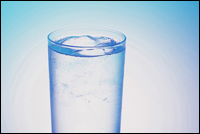Dear Umbra,
After slurping away from a Nalgene bottle all summer, you struck me with the fear of petrochemicals. So I did some quick research on my own.
My conclusion is that your Aug. 2 column is misleading, even though I’m very sympathetic to your argument regarding plastics. Upon inspection, I learned that most of my Nalgene water bottles are made of plastic #2, HDPE, which you suggest is relatively benign. Perhaps you should clarify that your criticism and concern is aimed primarily at the newer Lexan product, not Nalgene’s entire line of bottles. Indeed, it seems your recommendation could be that consumers avoid the #7 product, and instead purchase the #2 product (if we’re willing to use plastics). Well, the good news is that the #2 product is less expensive than the #7.
It isn’t usually my place to be a corporate defender, but I think your initial column simplifies the situation. If my logic is faulty, I hope you’ll let me know!
Jay
Gettysburg, Penn.
Dearest Jay,
You’re right. I completely fell down on the job and allowed my #7 Nalgene to lead me astray. Nalgene does indeed make both Lexan and HDPE bottles (though, alas, the snazzy new colors come only in the Lexan variety). As Tony Blair said, “I take full responsibility and apologize for any information given in good faith that has subsequently turned out to be wrong.”

Go with glass.
I did simplify the situation. No, I take that back. The situation is simple. Drinks from non-plastic vessels taste better. Plastic is a non-renewable resource, its manufacture is energy- and resource-intensive, and in many cases highly toxic. It does not biodegrade. Polyvinyl-chloride manufacturing releases dioxins, as does the incineration of said PVC. Plastic used in food applications can get worn and torn and eventually harbor terrorist bacteria. Plastics recycling is also known as “downcycling,” because each reiteration of your original bottle is of lower quality than the next, until at last the landfill beckons.
Glass is a better choice. I know this may give the lifecycle analysis people a conniption. I do not care. Let’s face it: In most situations, you do not even need a plastic water container. If you’re at a desk, or in the kitchen, or even at spinning class, glass or ceramic vessels are fine. There is no good reason to use plastic water bottles in everyday life unless you are a professional cyclist or mountain climber.
So instead of fretting about plastic resins and trying to keep all the numbers straight, pass right over the entire issue by using a different material. Set aside one plastic container for the infrequent times when nothing but a lightweight unbreakable material will do. And make that material a #2, #4, or #5 plastic. (Contrary to what I said previously, I wouldn’t seek out #1 for those plastic-necessitating moments — #2, #4, and #5 are better.) The numbers are on the bottom, people.
Contritely,
Umbra

